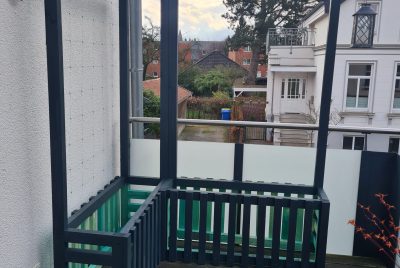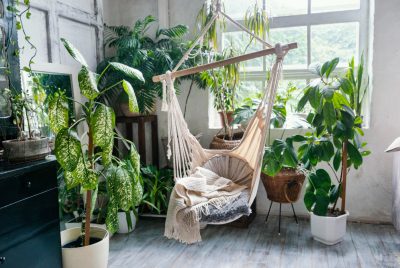Indoor Robot Gardening: Modernizing Agriculture
As an avid enthusiast of indoor robot gardening, I have witnessed the transformative power it holds in modernizing agriculture. By connecting sensors to compute and monitor the well-being of plants, we can achieve remarkable results. In this article, let’s explore the applications and advantages of indoor robot gardening, focusing on sensor connectivity and providing valuable recommendations for success.
The Rise of Indoor Robot Gardening
Indoor robot gardening has gained significant attention in recent years. With advancements in technology, robots have become capable of efficiently cultivating crops in controlled indoor environments. This approach offers numerous benefits that contribute to the modernization of agriculture.
Advantages of Indoor Robot Gardening
Increased Efficiency and Productivity
Indoor robot gardening optimizes cultivation processes, resulting in increased efficiency and productivity. Robots can perform tasks such as planting seeds, watering, and fertilizing with precision and consistency. They can operate autonomously, reducing the need for human intervention and saving valuable time and labor.
Resource Optimization
By monitoring and analyzing plant data, indoor robots can optimize resource usage. Sensors connected to the robots provide real-time information about soil humidity, nutrient levels, and environmental conditions. This data enables precise control of irrigation, fertilization, and climate, leading to efficient resource utilization and minimizing waste.
Year-round Cultivation
Indoor robot gardening allows for year-round cultivation, regardless of external weather conditions. By creating a controlled environment, robots ensure a stable and favorable climate for plants. This opens up new possibilities for growing crops that are traditionally limited to specific seasons, providing fresh produce throughout the year.
Connecting Sensors for Plant Monitoring
A key aspect of indoor robot gardening is the connectivity of sensors to monitor plant well-being. This integration allows us to gather essential data and make informed decisions to optimize plant growth and health.
Soil Humidity Monitoring
Sensors placed in the soil provide real-time information about moisture levels. This data helps ensure that plants receive adequate hydration without the risk of overwatering or underwatering. By accurately monitoring soil humidity, indoor robots can adjust irrigation schedules and volumes accordingly.
Monitoring Fruit Development
Connecting sensors that monitor the state of fruits offers valuable insights into their growth and ripening process. Data on factors like color, size, and sugar content can be collected, enabling timely harvesting and quality control. This level of precision ensures optimal fruit production and superior crop quality.
Recommendations for Successful Indoor Robot Gardening
To embark on a successful indoor robot gardening journey, consider the following recommendations:
Choosing the Right Indoor Robot
Select an indoor robot that aligns with your specific gardening needs and requirements. Consider factors such as size, capabilities, programming flexibility, and compatibility with sensor integration. Research various models and choose one that suits your goals and budget.
Choosing Sensors To Monitor Your Plants
When it comes to monitoring plants, various sensors can be used to gather valuable data about their well-being. Here are some commonly used sensors and their functionalities:
- Soil Moisture Sensor:
- Functionality: Measures the moisture content in the soil.
- Purpose: Helps determine when to water plants, preventing overwatering or underwatering. It ensures plants receive the right amount of hydration for optimal growth.
- Light Sensor:
- Functionality: Measures the intensity of light.
- Purpose: Assesses the amount of light available to plants. This data helps determine if plants are receiving adequate light for photosynthesis and assists in optimizing artificial lighting in indoor settings.
- Temperature Sensor:
- Functionality: Measures the ambient temperature.
- Purpose: Monitors the temperature around plants, ensuring it remains within the optimal range for their growth. It helps detect extreme temperatures that may affect plant health.
- Humidity Sensor:
- Functionality: Measures the level of moisture in the air.
- Purpose: Assesses the humidity levels around plants. It helps maintain a suitable humidity range, especially in indoor environments, where low humidity can cause issues like leaf drying or wilting.
- CO2 Sensor:
- Functionality: Measures the concentration of carbon dioxide.
- Purpose: Monitors the CO2 levels in the growing environment. It helps ensure plants receive adequate CO2 for photosynthesis, promoting healthy growth and productivity.
- pH Sensor:
- Functionality: Measures the acidity or alkalinity of the soil or nutrient solution.
- Purpose: Assesses the pH level, which is crucial for nutrient availability to plants. It helps maintain the appropriate pH range for optimal nutrient uptake and prevents nutrient deficiencies or toxicities.
- Electrical Conductivity (EC) Sensor:
- Functionality: Measures the electrical conductivity of the soil or nutrient solution.
- Purpose: Evaluates the nutrient concentration and salinity level. It helps ensure the nutrient solution is properly balanced, preventing nutrient imbalances or excess salinity that can harm plant roots.
- Leaf Wetness Sensor:
- Functionality: Measures the presence of water on the leaves.
- Purpose: Detects the moisture level on plant leaves. It helps in disease prevention by monitoring conditions that promote fungal growth. It assists in adjusting irrigation schedules and preventing excessive leaf wetness.
These sensors, when properly integrated into an indoor robot gardening system, provide real-time data on various environmental parameters. By utilizing this information, gardeners can make informed decisions and adjust conditions to optimize plant growth, health, and productivity.
Optimal Sensor Placement
Strategically place sensors to capture accurate and representative plant data. Consider factors like plant height, root depth, and the specific parameters you want to monitor. Placing sensors near the root zone and at various heights within the plant canopy ensures comprehensive data collection.
Regular Maintenance and Calibration
Maintain your indoor robot and connected sensors regularly. Clean sensors, calibrate them as per manufacturer guidelines, and replace batteries when necessary. Regular maintenance ensures accurate data collection and optimal performance of the indoor robot gardening system.
Transforming Agriculture with Indoor Robot Gardening
Indoor robot gardening has the potential to revolutionize agriculture. It offers sustainable solutions for food production, enabling efficient resource utilization, reduced environmental impact, and increased crop yields. Embracing this technology can help address challenges related to land scarcity, climate change, and food security.
Parting Words
Indoor robot gardening, with its sensor connectivity and precision cultivation, presents a promising future for agriculture. By embracing this modern approach, we can harness the power of technology to optimize plant growth, increase efficiency, and create a sustainable food system. Let us embark on this journey and witness the transformation it brings.
FAQs
Q1: Can indoor robot gardening be implemented in small spaces like apartments?
Absolutely! Indoor robot gardening is highly adaptable to small spaces like apartments. With the right indoor robot and proper sensor integration, you can create a thriving garden even in limited areas. Choose compact robots that can maneuver easily and utilize vertical space efficiently. You can grow herbs, small vegetables, and even ornamental plants to beautify your living space.
Q2: Are indoor robots capable of handling different plant species?
Yes, indoor robots can handle a wide range of plant species. They are versatile and can be programmed to accommodate the specific needs of different plants, including herbs, vegetables, flowers, and even fruit-bearing trees. Indoor robots can be fine-tuned based on the outputs of sensor monitoring.
Q3: How do sensors help in avoiding plant diseases and pests?
Sensors play a crucial role in early detection and prevention of plant diseases and pests. By monitoring factors like humidity, temperature, and soil conditions, sensors can provide timely alerts when there is a deviation from the optimal range. This allows you to take preventive measures promptly, such as adjusting watering schedules, applying organic pesticides, or improving ventilation to mitigate the risks of diseases and pests.
Q4: What are the energy requirements for running an indoor robot gardening system?
The energy requirements for running an indoor robot gardening system depend on various factors, including the size of the garden, the number of sensors, and the specific robot model. Most indoor robots are designed to be energy-efficient, using low-power motors and sensors. You can opt for models that are equipped with energy-saving features and timers to optimize energy consumption. It’s advisable to choose energy-efficient LED grow lights for optimal plant growth without excessive energy usage.
Q5: Are there any limitations or challenges associated with indoor robot gardening?
Some of these include the initial cost of purchasing an indoor robot and the associated sensors, the learning curve of operating and programming the robot, and the need for regular maintenance and sensor calibration.




